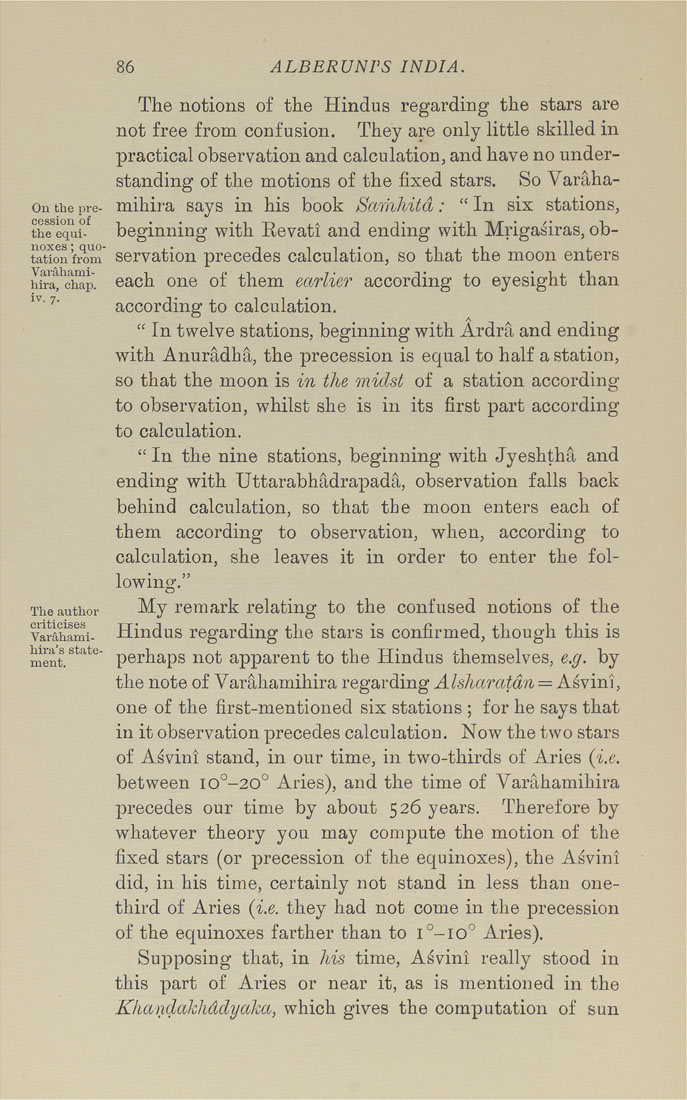ALBERUNTS INDIA.
On the pre¬
cession of
the equi¬
noxes ; quo¬
tation from
Varahami¬
hira, chap,
iv. 7.
The author
criticises
Varahami-
hira's state¬
ment.
The notions of the Hindus regarding the stars are
not free from confusion. They are only little skilled in
practical observation and calculation, and have no under¬
standing of the motions of the fixed stars. So Varaha¬
mihira says in his book Sctmhitd: " In six stations,
beginning with Eevati and ending with Mrigasiras, ob¬
servation precedes calculation, so that the moon enters
each one of them ectrlier according to eyesight than
according to calculation.
" In twelve stations, beginning with Ardra and ending
with Anuradha, the precession is equal to half a station,
so that the moon is in the midst of a station according
to observation, whilst she is in its first part according
to calculation.
" In the nine stations, beginning with Jyeshtha and
ending with Uttarabhadrapada, observation falls back
behind calculation, so that the moon enters each of
them according to observation, when, according to
calculation, she leaves it in order to enter the fol¬
lowing."
My remark relating to the confused notions of the
Hindus regarding the stars is confirmed, though this is
perhaps not apparent to the Hindus themselves, e.g. by
the note of Varahamihira regarding Alshctrcttdn = Asvini,
one of the first-mentioned six stations ; for he says that
in it observation precedes calculation. Now the two stars
of Asvinl stand, in our time, in two-thirds of Aries (i.e.
between io°-20° Aries), and the time of Varahamihira
precedes our time by about 526 years. Therefore by
whatever theory you may compute the motion of the
fixed stars (or precession of the equinoxes), the Asvinl
did, in his time, certainly not stand in less than one-
third of Aries (i.e. they had not come in the precession
of the equinoxes farther than to i°-io^ Aries).
Supposing that, in his time, Asvini really stood in
this part of Aries or near it, as is mentioned in the
Khctndctkhddyctkct, which gives the computation of sun
|








